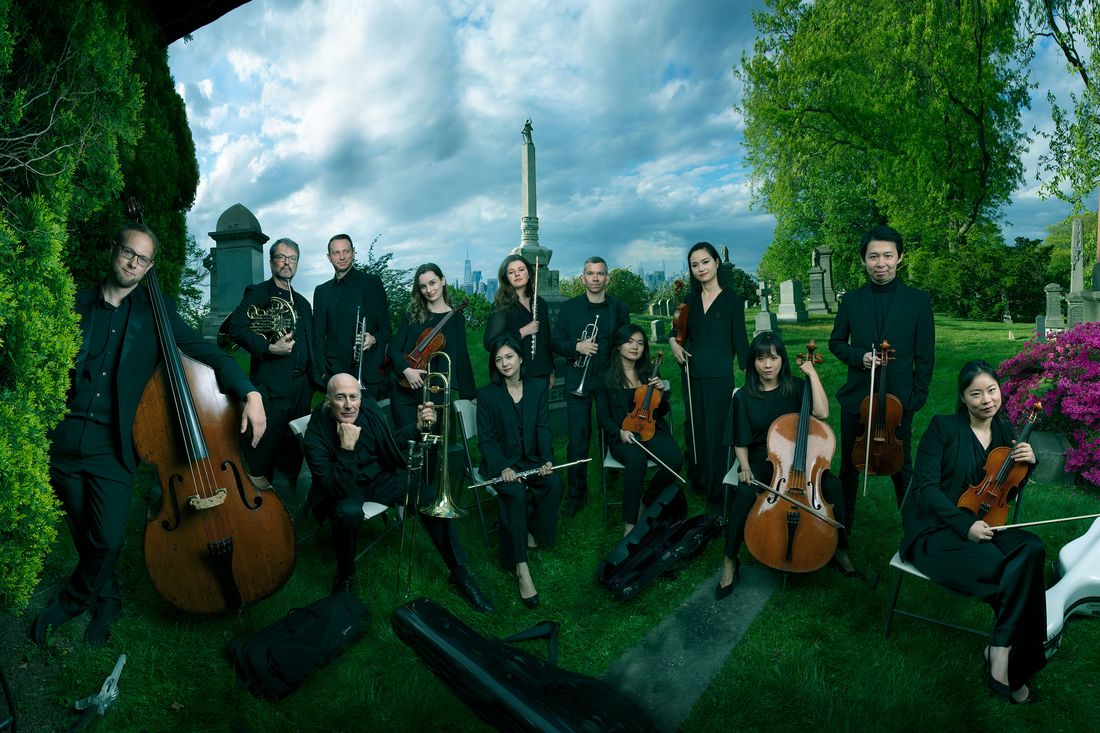
The New York Philharmonic has been emerging from its pandemic shell in stages, with a mixture of caution and disbelief. Impromptu performances from the back of a pickup truck, a string ensemble in an empty church, the first appearance in front of a tiny audience spread through a huge space at the Shed ÔÇö these bits of concert life have kept the players faintly tethered to their routines. Soon, 17 members of the orchestra will pop up among the sepulchres at Green-Wood Cemetery as part of the series ÔÇ£Death of Classical.ÔÇØ
That might not seem like the obvious location to stage the revival of performance culture, but when Green-Wood opened in 1838, it was intended to be one of New YorkÔÇÖs grandest, most verdant, and most romantic public parks. (Today, its permanent residents include the orchestraÔÇÖs late music director Leonard Bernstein.) The cemetery performance will still be a long way from the full force of 100 musicians, with their sound that moves like an ocean breaker, rumbling, flowing, and bursting with beautiful violence. ÔÇ£I miss that swell, that surround sound,ÔÇØ says the trumpet player Ethan Bensdorf, whose usual station is on a riser at the back of the stage. HeÔÇÖll finally get to experience that at a Memorial Day concert in the Cathedral Church of Saint John the Divine, though the public will only hear it livestreamed and compressed.
Fourteen months of suspended animation have had their rewards as well as losses. Qianqian Li, the principal player in the second-violin group, used the pause to go back to basics, focusing on scales and technical exercises. When she crept back into ensemble playing, joining the other principals in a string quartet, the experience was joyous, if a little strange. ÔÇ£We rehearsed in a room sitting six feet apart and wearing a mask. We loved being together, hearing each otherÔÇÖs breathing. When I came home, I was almost in tears.ÔÇØ
Orchestral players communicate through a series of semiconscious cues, adjusting their timing to a colleagueÔÇÖs nod or the jerk of an elbow. They watch the conductor, who must work extra-hard to command attention with a covered face. Mostly, though, they listen to one another. ÔÇ£We play with our hands, but weÔÇÖre led by our ears,ÔÇØ says violist Cong Wu. At COVID-mandated distances, it can be challenging to hear all the details. But those obstacles can also bring more alert listening and deliberate focus, heightening teamwork. ÔÇ£WeÔÇÖre giving more ÔÇö more emotion, body language, volume, more energy,ÔÇØ Wu says.
The musicians can sense that in real time. ÔÇ£At first, we all waited for each, and we were hesitant,ÔÇØ Li says. ÔÇ£Then we learned to trust the timing, the conductor, and each other. We started to listen and lead at the same time. So when we get back to a normal setting, weÔÇÖll play even better than we did before.ÔÇØ
More From This Series
- The Guggenheim Goes Dark
- ItÔÇÖs Okay to Have Fun at the WritersÔÇÖ Strike
- Bookforum Was a Good Magazine


